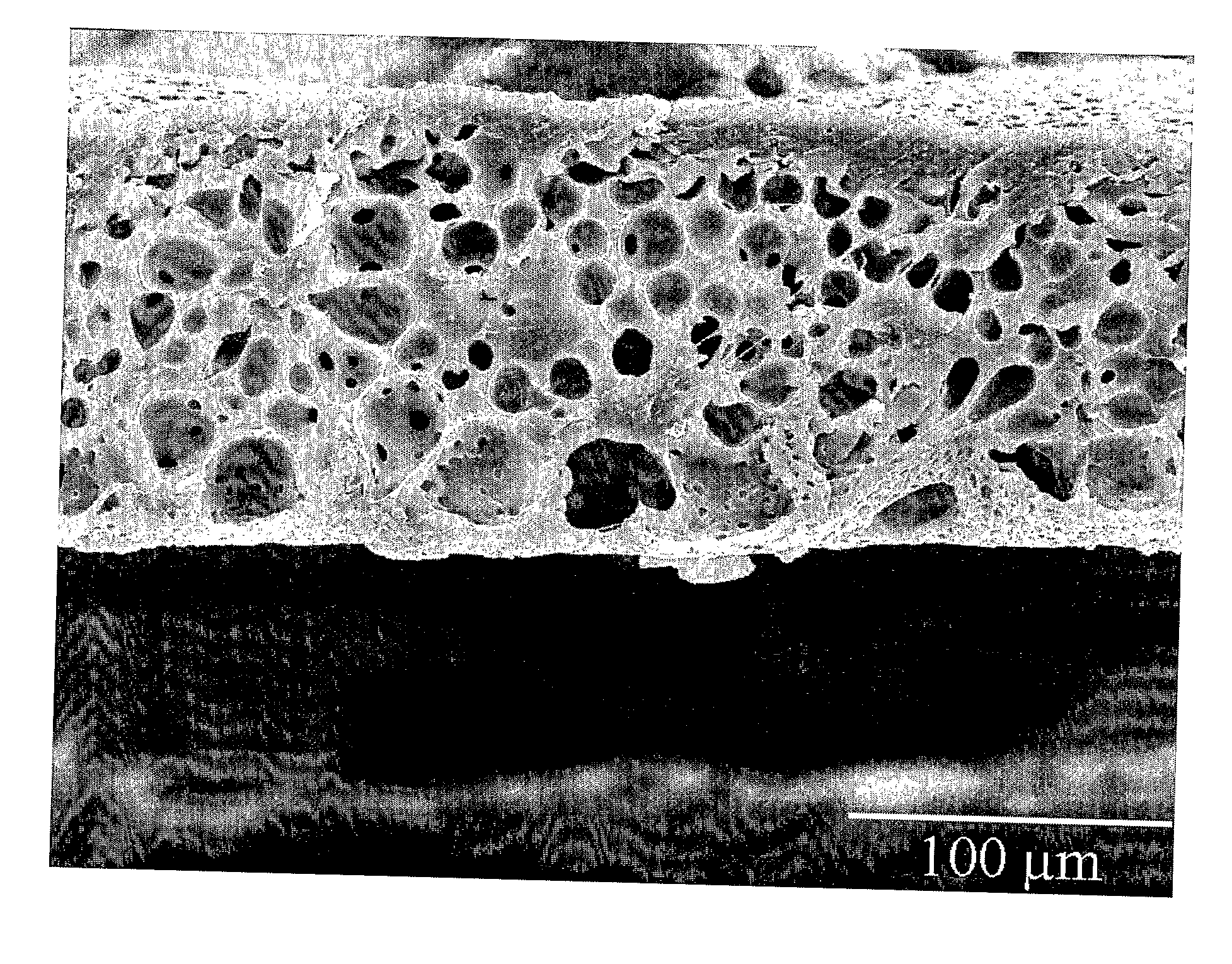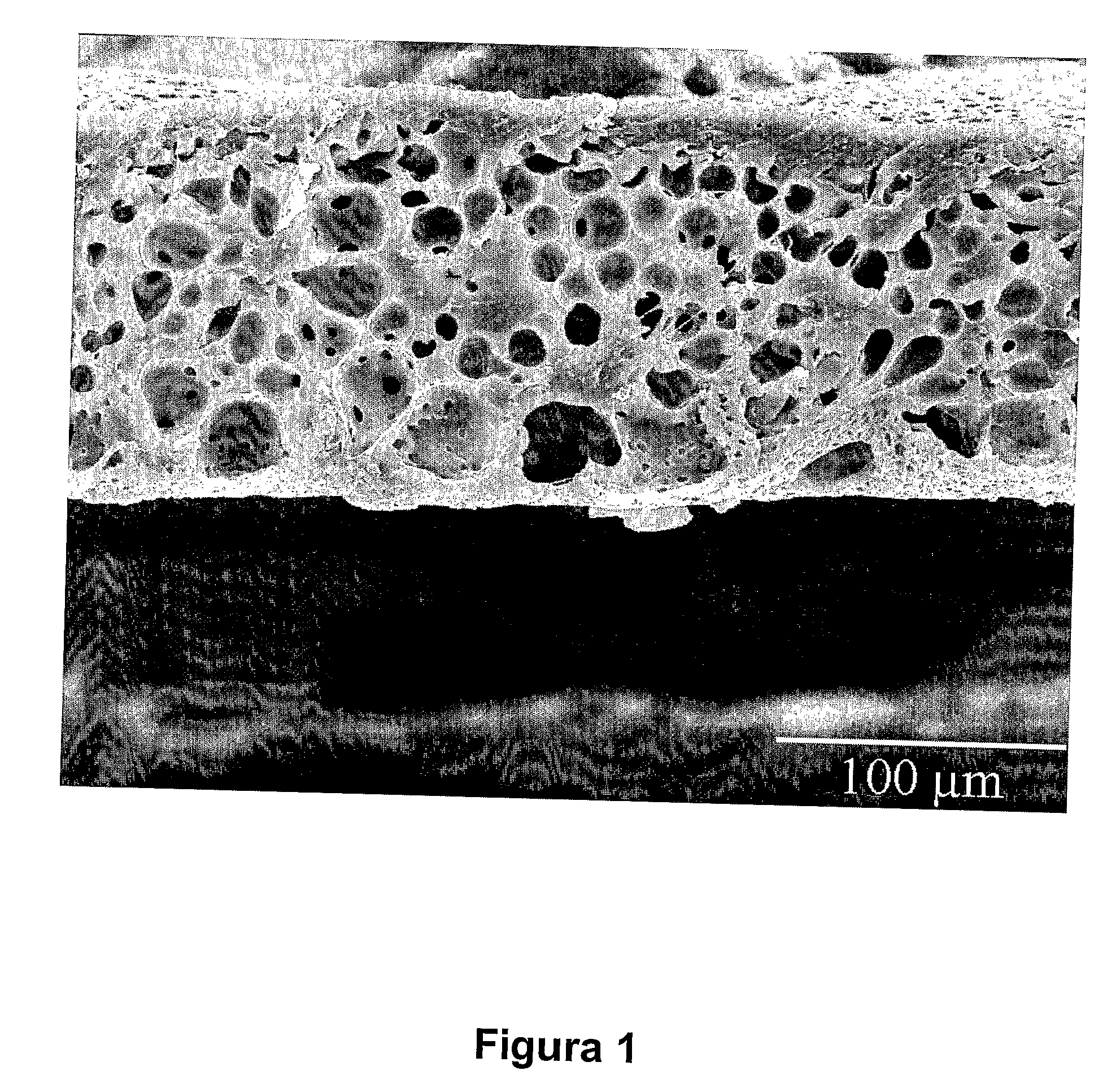Process of synthesis asymmetric polyurethane based membranes with hemocompatibility characteristics and membranes obtained by said process
a polyurethane and hemocompatibility technology, applied in the field of chemical and biomedical engineering, can solve the problems of high limited use, and damage to red blood cells, and achieve the effect of reducing the risk of failure due to leakage and reducing the risk of damag
- Summary
- Abstract
- Description
- Claims
- Application Information
AI Technical Summary
Benefits of technology
Problems solved by technology
Method used
Image
Examples
example 1
[0063]A polymerization reaction is carried out in a reactional mixture composed of two pre-polymers, two solvents and a few drops (2-3) of a catalyst—Stannous Octoate.
[0064]The percentage of the mixture of the two pre-polymers is 40% p / p and the one of the solvents is 60% p / p.
[0065]The pre-polymers, poly(propylene oxide) and poly(caprolactone) diol are in the proportion of 90:10, respectively.
[0066]The mixture of solvents, dimethylformamide and diethyl ether are in the proportion of 55% p / p and 5% p / p, respectively.
[0067]The mixture of pre-polymers, solvents and catalyst is agitated and made homogeneous and the reaction is then carried out under an inert atmosphere of nitrogen for two hours.
Membrane Formation
[0068]The polymeric solution above described is spread with a calibrated knife of 250 μm over a glass plate very well clean and fat-free. After an exposition to air during one minute the plate is immersed in water at room temperature during 24 hours.
[0069]The membranes formed ar...
example 2
[0074]The description of example one was followed with the exception than now in the mixture of the solvents there is 45% p / p of dimethylformamide and 15% p / p of diethyl ether.
[0075]The time of exposure to air is now of 30 seconds.
[0076]These membranes were tested to gas permeation and the permeabilities to O2 and to CO2 are respectively of 32.5 and 225.3 barren.
[0077]The results of hemocompatibility are identical with no hemolysis and no thrombogenicity at 10 min.
PUM
| Property | Measurement | Unit |
|---|---|---|
| molecular weights | aaaaa | aaaaa |
| molecular weights | aaaaa | aaaaa |
| temperature | aaaaa | aaaaa |
Abstract
Description
Claims
Application Information
 Login to View More
Login to View More - R&D
- Intellectual Property
- Life Sciences
- Materials
- Tech Scout
- Unparalleled Data Quality
- Higher Quality Content
- 60% Fewer Hallucinations
Browse by: Latest US Patents, China's latest patents, Technical Efficacy Thesaurus, Application Domain, Technology Topic, Popular Technical Reports.
© 2025 PatSnap. All rights reserved.Legal|Privacy policy|Modern Slavery Act Transparency Statement|Sitemap|About US| Contact US: help@patsnap.com


